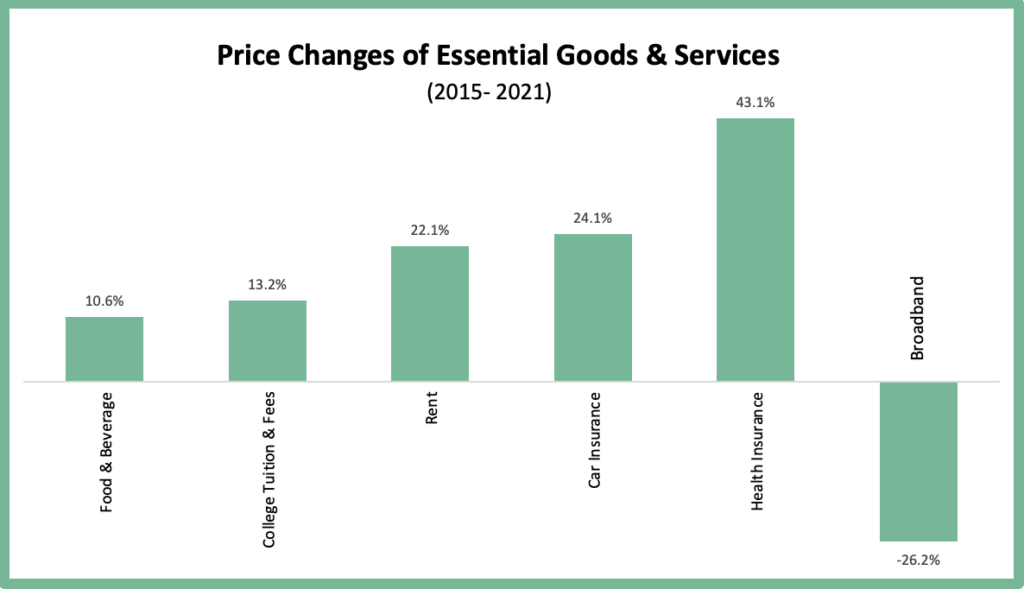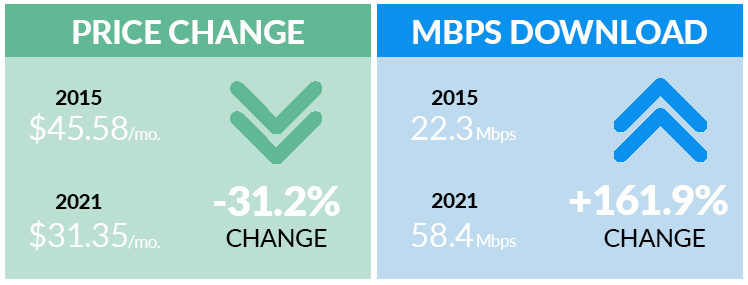 Photo from Unsplash
Photo from UnsplashOriginally Posted On: https://www.highspeedoptions.com/resources/insights/home-internet-prices-dropping
I keep going back to this FCC report.
Did you know nearly one in three Americans don’t have home internet? FCC data shows that today more than 114 million people opt for no internet service at home, citing cost as the main deterrent. So, the White House is finalizing an infrastructure bill that includes $65 billion for broadband development, also citing cost as the main concern. It claims that Americans “pay too much […for…] overpriced” broadband services.
Yet, after digging into the numbers, it turns out internet prices have actually been declining over the past six years. And, at an impressive rate, no less. So, what gives?
Is internet service in the US so expensive that these significant price drops still aren’t enough for many Americans? Or is there a disconnect between the real state of the internet and what’s deemed a problem on the Capital floor? I turned to the USTelecom Broadband Association, White House reports, and the latest FCC data to find out.
Cost of Living for AmericansIn a recent White House paper, economists looked at the cost of living for Americans over the last 30 years (1990 – 2019) and how essential goods and services take up a bigger chunk of family budgets each year. This means that prices of necessities have been outpacing families’ growing incomes.
While the White House mainly focused on necessities like food, education, rent, and healthcare in this paper, it did acknowledge that what constitutes a need can change over time. For example, the report notes that “high-speed internet access became a necessity for school-age children when COVID-19 forced schools to shift to remote instruction.” We’d go further to say that the internet is now a must-have for everyone, even during pre-pandemic times.
So, how does broadband (a necessity) stack up against other goods and services? USTelecom pulled broadband internet prices dating back to 2015 to see how it changed over time and then compared it against the US Bureau of Labor Statistics’ Consumer Price Index (2015-2021).
Here’s what the data shows.

As you can see, broadband may be one of the only silver linings amid the rapid inflation these days. The President and CEO of USTelecom, Jonathan Spalter, observed that “while the cost of most goods and services are, in fact, going up, the cost of broadband – at all price points – has been steadily dropping.” By “all price points,” he’s referring to the most common broadband tiers such as highest-speeds, most popular, and entry-level, which are all cheaper now.
To understand internet affordability as it relates to price-conscientious users and the White House’s claims, I dug deeper into USTelecom’s entry-level tier findings. And all the data reads positively.
Current Entry-Level Broadband PricesThe latest USTelecom Broadband Pricing Index shows that the US broadband market is actually working for consumers, not against them. All in all, broadband service has become both cheaper and faster for lower and middle-class families over the last six years.
For example, entry-level broadband plans have decreased in monthly price from $45.58 in 2015 to $31.35 in 2021, which equals about $170 in annual savings. That’s a 31.2% decrease in the average price of entry-level broadband plans across the country.
Moreover, internet speeds are improving as prices drop, too. The average download speed for entry-level broadband plans sits around 58.4 Mbps in 2021 compared to 22.3 Mbps in 2015. That’s more than double the minimum speed requirement for broadband internet according to the FCC’s standards.

Now, I’m not saying these improvements are enough to convince the 114 million people without broadband service to sign up for a plan. A lot more goes into a family’s ability to purchase internet. However, it does suggest that we may already have the right policies in place today to stimulate the telecom industry without additional funds needed.
Across the board, data confirms that US consumers do have access to affordable, high-quality internet service and that broadband prices have been consistently dropping since 2015. Our hope is that this price trend continues in the coming years and that further competition in the marketplace will help deliver affordable, high-speed internet service to more Americans.
If you’re in need of fast, cheap internet, check out the latest internet deals. Or, enter your zip code below to find internet providers available near you.
